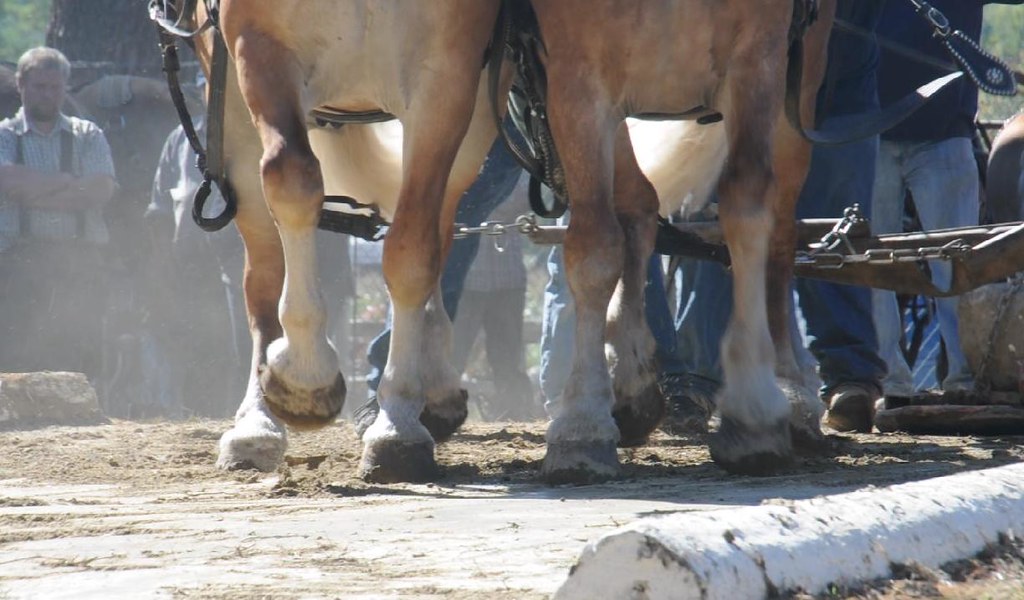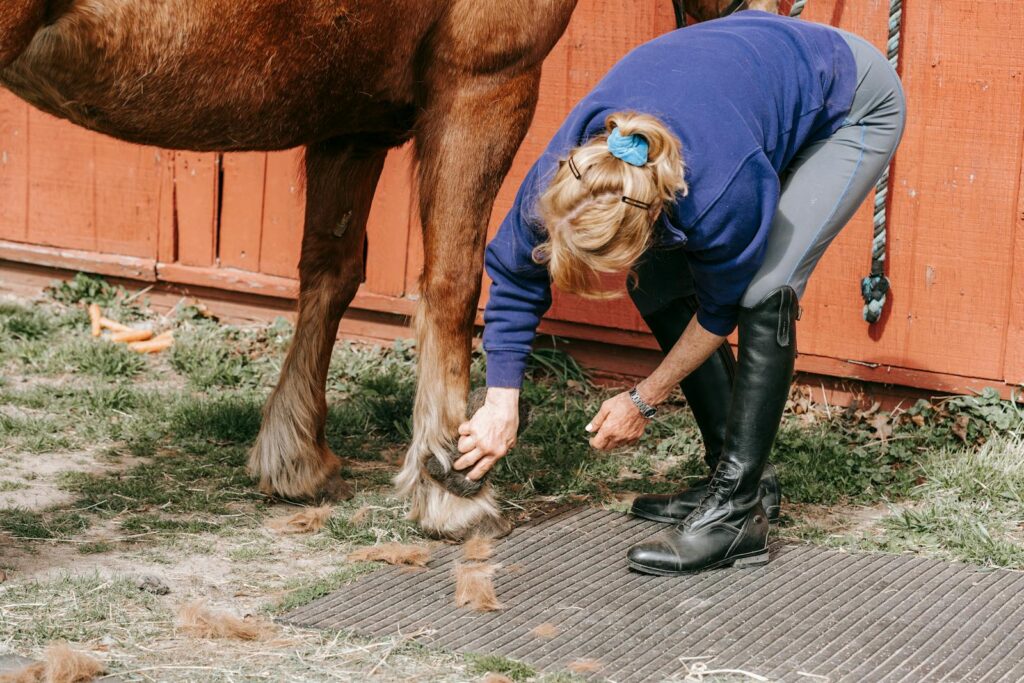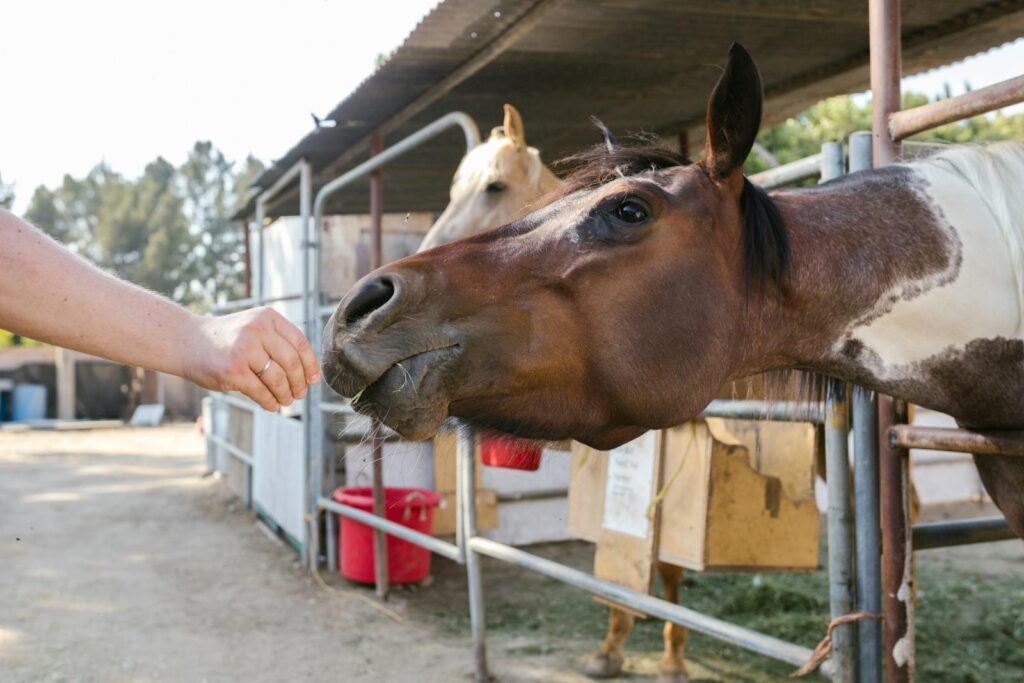Equine joint health becomes a crucial consideration as horses age or when they engage in demanding activities. Just like humans, horses can experience wear and tear on their joints over time, leading to discomfort and reduced mobility. For horse owners and caretakers, finding effective supplements to support joint function can significantly improve their equine companion’s quality of life and extend their active years. The market offers numerous options for joint supplements, each with different active ingredients targeting various aspects of joint health. Understanding these options helps in making informed decisions for your horse’s specific needs.
Understanding Equine Joint Anatomy and Common Issues

Horse joints are complex structures consisting of bones, cartilage, ligaments, tendons, and synovial fluid that work together to enable smooth movement. The cartilage covering the ends of bones provides cushioning and allows frictionless motion, while synovial fluid acts as a lubricant within the joint capsule. Over time, especially with high-impact activities or natural aging, this cartilage can deteriorate, and inflammation may develop, leading to conditions like osteoarthritis or degenerative joint disease. These issues often manifest as stiffness, reduced range of motion, reluctance to perform certain movements, or visible swelling around joints. Understanding these fundamentals helps horse owners recognize why certain supplements target specific components of joint health and how they might benefit their equine companions.
Key Ingredients in Effective Joint Supplements

When evaluating joint supplements for horses, several key ingredients have been shown to support joint health. Glucosamine, a building block of cartilage, aids in cartilage synthesis and may help slow its breakdown. Chondroitin sulfate works synergistically with glucosamine to maintain cartilage integrity and inhibit enzymes that degrade joint tissue. Methylsulfonylmethane (MSM) supplies bioavailable sulfur, which is essential for healthy connective tissues, and also offers natural anti-inflammatory effects. Hyaluronic acid (HA), a major component of synovial fluid, provides lubrication and shock absorption within the joint. Omega-3 fatty acids—particularly EPA and DHA—help reduce inflammation throughout the body, including the joints. Understanding these core ingredients provides a solid foundation for evaluating the many supplement options available on the market.
Glucosamine and Chondroitin: The Classic Combination

Glucosamine and chondroitin are among the most well-established combinations in horse joint supplementation. Glucosamine provides the building blocks for glycosaminoglycans (GAGs), which are essential for cartilage structure and function. Chondroitin sulfate, typically derived from bovine or marine sources, helps preserve cartilage integrity by inhibiting degradative enzymes and enhancing water retention within the joint. Research indicates these ingredients are most effective when used together, creating a synergistic effect that surpasses the benefits of either compound alone. Many veterinarians recommend supplements containing both as a first-line approach for horses showing early signs of joint discomfort or as preventative support for athletic horses under regular physical stress. Typical dosages range from 5,000–10,000 mg of glucosamine and 1,200–1,800 mg of chondroitin daily, though these amounts may vary based on the individual horse’s needs.
MSM: The Sulfur Component for Connective Tissue

Methylsulfonylmethane (MSM) has gained significant recognition in equine joint health for its role in supporting connective tissues throughout the body. This organic sulfur compound contributes to the formation of disulfide bonds that enhance the strength and flexibility of joint tissues, including ligaments and tendons. In addition to its structural role, MSM exhibits notable anti-inflammatory and antioxidant properties, helping to reduce oxidative damage in joint tissues and regulate immune responses that drive inflammation. Many horse owners report noticeable improvements in comfort and movement within weeks of starting MSM supplementation. Research indicates effective dosages typically range from 10,000–20,000 mg daily, with higher amounts sometimes recommended during acute flare-ups or for horses with more severe joint issues. As one of the safer supplements with minimal side effects, MSM is often a cornerstone ingredient in comprehensive joint formulations.
Hyaluronic Acid: The Joint Lubricant

Hyaluronic acid (HA) plays a critical role in maintaining healthy joint function by enhancing the viscosity and lubricating properties of synovial fluid. This naturally occurring glycosaminoglycan attracts and binds water molecules, creating a cushioning effect within the joint capsule that absorbs impact and reduces friction between moving surfaces. In aging or hard-working horses, natural HA production may decline, leading to joint stiffness and reduced mobility. Oral HA supplements have shown promising results in supporting joint health, though the molecular weight and bioavailability of the HA can significantly influence effectiveness. Higher molecular weight formulations generally provide better results but may be more difficult for the digestive system to absorb. Many premium joint supplements include HA alongside other active ingredients, typically at doses ranging from 100–200 mg daily, while injectable forms administered by veterinarians deliver HA directly into affected joints in more severe cases.
Omega-3 Fatty Acids for Inflammation Management

Omega-3 fatty acids, particularly EPA (eicosapentaenoic acid) and DHA (docosahexaenoic acid), offer powerful anti-inflammatory benefits, making them valuable components in joint health management for horses. These essential fatty acids work by modulating the body’s inflammatory response at the cellular level, reducing the production of pro-inflammatory substances while promoting the synthesis of anti-inflammatory compounds. For horses with chronic joint issues, this systemic anti-inflammatory effect complements the more targeted actions of other joint supplements. Common sources of omega-3s in equine products include fish oil, flaxseed oil, and algal extracts, with marine-derived sources generally providing higher concentrations of the most beneficial forms. An effective daily dose typically ranges from 5,000–10,000 mg of combined EPA and DHA, though benefits may take several weeks to appear as fatty acids gradually incorporate into cell membranes throughout the body. These anti-inflammatory effects extend beyond joint health, potentially benefiting the skin, respiratory system, and cardiovascular function as well.
Herbal Anti-Inflammatories: Devil’s Claw, Boswellia, and Turmeric

Herbal anti-inflammatory agents represent an important category in equine joint supplementation, offering natural alternatives for managing inflammation and discomfort. Devil’s claw (Harpagophytum procumbens) contains active compounds called harpagosides, which inhibit inflammatory pathways in a manner similar to some pharmaceutical drugs but with fewer side effects. Boswellia serrata produces resin rich in boswellic acids that specifically target 5-lipoxygenase, an enzyme closely associated with inflammation in joint conditions. Turmeric provides curcumin, a potent anti-inflammatory compound that acts through multiple mechanisms, including the inhibition of pro-inflammatory enzymes and cytokines. These botanical ingredients often work synergistically, delivering complementary anti-inflammatory effects through distinct biochemical pathways. When choosing supplements that include these herbs, quality is essential—opt for standardized extracts with guaranteed levels of active compounds rather than simple ground herbs, and ensure the formulation addresses bioavailability, as many of these compounds are poorly absorbed without specific carriers or processing methods.
Avocado/Soybean Unsaponifiables (ASU)

Avocado/Soybean Unsaponifiables, commonly abbreviated as ASU, have emerged as a valuable addition to joint health formulations for horses. These natural vegetable extracts contain specific fractions of avocado and soybean oils that have demonstrated chondroprotective properties in scientific studies. ASU works by stimulating cartilage repair mechanisms while reducing the expression of inflammatory molecules that contribute to joint degradation. Research indicates that ASU may enhance the synthesis of collagen and proteoglycans—essential components of healthy cartilage—while inhibiting enzymes that break down the cartilage matrix. Notably, when combined with glucosamine and chondroitin, ASU appears to enhance the effectiveness of these traditional supplements, making it a valuable addition to comprehensive joint formulations. Effective supplements typically include ASU at doses between 300–600 mg daily, though results may take 1–2 months to become apparent as the compounds gradually influence cellular activity within joint tissues.
Collagen and Gelatin Supplements

Collagen and gelatin supplements have gained attention for their potential to support joint health at the structural level. Collagen is the primary protein in connective tissues—including cartilage, tendons, and ligaments—providing both strength and flexibility to these structures. Hydrolyzed collagen and gelatin (a partially hydrolyzed form of collagen) supply amino acids like glycine, proline, and hydroxyproline that serve as building blocks for the body’s own collagen synthesis. Some research suggests that these specific amino acid profiles may stimulate chondrocytes (cartilage cells) to produce new collagen and other matrix components. Modern processing techniques have improved the bioavailability of these supplements, allowing for better absorption in the equine digestive system. Many horse owners report improvements in overall mobility and reduced joint stiffness when using quality collagen supplements, particularly in older horses where natural collagen production has declined. Effective supplementation typically involves 10,000–20,000 mg daily, often combined with vitamin C, which acts as a cofactor in collagen synthesis.
Silicon and Mineral Support for Joint Health

Silicon and other trace minerals play crucial—but often overlooked—roles in maintaining strong connective tissues that support healthy joints. Silicon, particularly in bioavailable forms like orthosilicic acid or plant extracts such as horsetail, contributes to collagen cross-linking, which provides strength to tendons, ligaments, and cartilage. This mineral enhances the structural integrity of connective tissues by improving collagen organization and stability. Manganese acts as an essential cofactor for enzymes involved in proteoglycan synthesis within cartilage, while copper supports lysyl oxidase activity, an enzyme critical for collagen cross-linking. Zinc contributes to tissue repair and helps regulate immune function, which can influence inflammatory responses within joints. Effective joint supplements often include these trace minerals in chelated forms to improve absorption and utilization. Horse owners should ensure their supplement program includes these supportive nutrients, especially if the horse’s forage is potentially deficient due to soil conditions or if the animal has increased needs due to age or activity level.
Choosing the Right Supplement Format

Joint supplements for horses come in various formats, each with advantages and considerations that may influence their suitability for specific situations. Powders represent the most common form, offering versatility in dosing and typically good value per dose, though some horses may reject strongly flavored powders mixed in feed. Pelleted supplements provide convenience and generally good palatability, but may contain binding agents and fillers that add no therapeutic value. Liquid supplements can offer excellent absorption rates and are ideal for horses that reject other formats, though they may require refrigeration and careful measurement. Specialized delivery systems like oral syringes with paste formulations prove useful for horses that are difficult to medicate or during travel situations. Injectable joint supplements administered by veterinarians provide direct delivery of compounds like hyaluronic acid to affected joints, bypassing digestive limitations but requiring professional administration. When selecting a format, consider your horse’s preferences, your management routine, and the specific joint supporting compounds you wish to provide.
Evaluating Quality and Efficacy in Supplements

Navigating the equine supplement market requires careful attention to quality indicators that reflect a product’s potential efficacy. Reputable manufacturers offer transparency about ingredient sources, manufacturing processes, and quality control measures—often submitting their products for independent analysis by organizations like the National Animal Supplement Council (NASC). Look for clearly stated amounts of active ingredients rather than proprietary blends that obscure actual quantities, and verify that dosages align with research-supported effective levels. Information on stability and shelf life signals a manufacturer’s commitment to ensuring the ingredients remain potent through the product’s use. Peer-reviewed research specific to the formulation provides stronger support than generic claims or testimonials, though practical feedback from veterinarians and fellow horse owners also offers valuable real-world insight. Premium supplements may cost more due to higher-quality ingredients, superior bioavailability, and stricter quality control, but they often deliver better results than cheaper alternatives with low active ingredient levels or poor absorption.
Creating a Comprehensive Joint Support Strategy

Effective joint care for aging or athletic horses goes beyond supplementation, requiring a comprehensive approach that addresses the many factors influencing joint health. Proper weight management helps prevent excessive strain on joints, with research showing that even mild overweight conditions can significantly increase stress on load-bearing structures. Appropriate exercise supports joint mobility and muscle strength while promoting circulation of synovial fluid, though the program should be tailored to the horse’s condition and capabilities. Managing footing—by providing consistent, suitable surfaces for work and turnout—reduces concussive forces and uneven stress that can damage joint structures. Regular farrier care ensures proper hoof balance and alignment, helping prevent asymmetrical forces from traveling up the limb and impacting joints. For horses with existing joint issues, veterinary guidance is essential and may include treatments such as intra-articular injections, IRAP (Interleukin-1 Receptor Antagonist Protein) therapy, PRP (Platelet-Rich Plasma), or shock wave therapy alongside targeted supplementation. This multi-faceted strategy creates synergistic effects that optimize joint health and function.
When to Start Supplementation: Prevention vs. Treatment

Knowing when to start joint supplements can make a big difference in your horse’s long-term comfort and mobility. For horses with conformational challenges, those beginning more intense training, or those entering high-impact disciplines like jumping or reining, it’s wise to begin supplementation before any signs of joint trouble appear. Young performance horses may also benefit from early support, helping lay the foundation for healthy joints as they grow. For aging horses, starting a supplement routine around age 12 to 15 can help maintain flexibility and ease, even if stiffness isn’t obvious yet. Once joint issues are noticeable, supplements usually begin with a higher “loading dose” for 4 to 6 weeks before shifting to a maintenance level—and often work best when paired with veterinary care. While supplements can’t undo existing damage, starting them at the right time can go a long way in protecting joint function and supporting your horse’s quality of life at every stage.
Monitoring Results and Adjusting Supplementation

Tracking whether a joint supplement is truly helping your horse takes time, consistency, and a thoughtful approach. Begin by noting how your horse moves and behaves before starting the supplement—pay attention to things like stride length, willingness to move forward, ease when turning, comfort during mounting, and performance during typical riding activities. Try to observe your horse under similar conditions each time, such as after the same type of work or at the same time of day. Improvements are usually gradual and may take a few weeks to appear. Often, the earliest signs are subtle—like slightly freer movement or smoother transitions. Taking videos can help you spot small changes over time. Feedback from your trainer or anyone who rides your horse regularly is also helpful for tracking progress. If you don’t notice improvements after 60 to 90 days, consider adjusting the dosage, trying a different formula, or consulting your veterinarian to explore other factors that may be affecting joint health.
Joint supplements are a valuable tool for supporting equine mobility and comfort, especially in aging horses or those involved in demanding athletic work. While they can’t prevent all joint deterioration or replace veterinary care for serious issues, well-chosen products with proven ingredients can help maintain joint function and may slow the progression of wear and tear. The most effective strategy combines high-quality supplementation with good overall management—appropriate exercise, weight control, proper footing, and regular veterinary care, all tailored to the horse’s specific needs. By understanding the key ingredients, knowing what to look for in quality products, and implementing them at the right time, horse owners can make confident, informed decisions that support their horse’s long-term soundness and overall quality of life.







